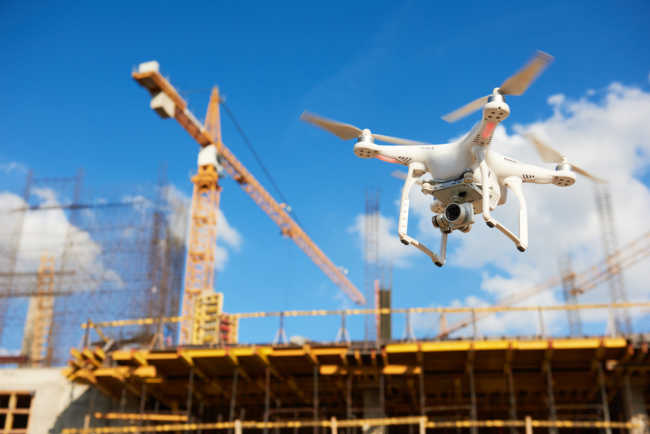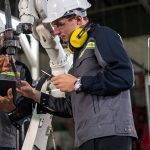What makes a good construction drone and how to avoid common buying mistakes
Whether you are buying your first drone, or looking to grow your current fleet, we outline 5 steps to purchasing a construction drone, and then provide you with our top 5 drone recommendations for the construction industry.
The 5 Steps to Purchasing a Construction Drone:
- Determine Your Needs
- Choose Your Software
- Choose Your Hardware
- Pick Your Price Range
- Avoid Common Drone Buying Mistakes
In this article I will explain what makes a good construction drone and how to avoid common drone buying mistakes.
Know What Makes a Good Construction Drone
1. Camera Quality
| Why it matters | In short, the higher the quality of your camera, the easier your drone flights and the better your imaging results. Whether you’re relying on your drone for aerial marketing footage or detailed site analysis, the quality of your camera will have a huge impact on your results. |
| How it’s measured | There are two important factors to account for when judging camera quality:
Most people just look to megapixels to determine how a camera will perform. But, think about comparing the image quality between a phone camera and a DSLR with the same number of MP. The contrast is striking. It’s the size of their sensors that makes the difference. A larger sensor can capture more light and therefore render a higher quality image. The key is finding a balance between sensor size, megapixels, and price. |
| What to look for |
|
2. Portability
| Why it matters | If your drone is going to stay on one site for the entire duration of a project, then portability is likely not going to be a top concern. However, if you plan on frequently transporting your drone between sites, or taking it with you on a plane, portability is going to be crucial. |
| How it’s measured | Portability is a bit subjective, but in general you should ask yourself a couple questions:
|
| What to look for |
|
3. Durability and Stability
| Why it matters | Flying a construction drone means you don’t have much choice about the timing and conditions in which you fly; you have to get your images and you have to get them regularly. Your drone has to be able to stand up to dust, dirt, wind, rain, and the occasional collision.
If you don’t have a durable, stable drone, it’s not going to last very long |
| How it’s measured | Stability is measured in wind speed resistance, the higher this number, the more more stable your drone will be in rough flight conditions.
Durability is a more subjective measure, the best way to get an idea of this quality is to read customer reviews on the web. |
| What to look for |
|
4. Ease of Use
| Why it matters | How simple is it to get your drone out of the box and into the air? You may not think this matters since you have to have a licensed pilot operating the drone, but the ease with which you can get your drone flying will make a difference in how quickly you can capture data and how much time your employees spend in the process of flying. |
| How it’s measured | Everytime you go out and fly you have to do a couple things: make sure everything’s charged(remote control, drone, and tablet/phone), check for firmware updates, and perform calibrations (GPS, Compass, Inertia). |
| What to look for | There are a number of factors to account for in ease-of-use. We found the best way to get a feel for this is to read online reviews from people who have purchased the drone. Additionally, ask yourself the following questions:
|
For Price Range, please read our full article published here.
Avoid Common Construction Drone Buying Mistakes
There are a few cautions to keep in mind when purchasing a construction drone:
Beware of buying the newest, most expensive drone.
Drones are always evolving, and they are prone to getting damaged. This means the latest and greatest technology will quickly come down in price, and there is likely a cheaper option that will still fit your needs.
Buy a drone meant for commercial use, don’t try and get by with a hobbyist drone.
Hobby drones may be cheaper (and fun to fly), but they are not designed to be the reliable workhorse you need. You should definitely avoid using consumer drones for professional purposes. That’s not to say however, that a “pro-sumer” drone can’t get the job done. These drones sit on the low end of the higher price range and usually offer the oomph necessary for construction jobs.
Don’t spring for a fixed-wing drone.
There’s a reason most of the drones you see in use are quadcopters. Fixed-wing drones have specific scenarios where they are superior, mainly with regards to flight endurance and range. Unfortunately, these benefits are null as regulations require that you maintain visual contact with your drone (what good is a range of several miles if you can’t use it?). And, in general, fixed wing drones are more difficult to maintain, launch, and land.
Make sure your drone automatically inserts geolocation data into each photo.
Geo-reffing sucks. It involves combing through thousands of photographs and matching drone GPS data to the timestamps on your individual photographs. If your drone isn’t automatically inserting geo-location data into each photo, there better be a damn good reason.
Buy on track record, not on hype.
This goes along with our advice of not buying the latest and greatest technology. A number of drone makers have come and gone over the years, and very few have demonstrated staying power. Hype around a new product doesn’t mean you should buy it. Remember, what you need in a construction drone is the reliability to accurately gather your data every time it flies.
Make sure your drone is compliant.
Drone regulation is still in its infancy, and some manufacturers are pushing the boundaries of what is technically legal to fly. If you’re looking at purchasing a newer drone, be sure to check with the manufacturer as to how their drone fits into the regulatory framework.
 This article was written by Nick Hertzman, a Content Strategist at Unearth Technologies in Seattle, WA. He uses his background in academic research and technology to predict construction trends and analyze how contractors can best leverage them for their business.
This article was written by Nick Hertzman, a Content Strategist at Unearth Technologies in Seattle, WA. He uses his background in academic research and technology to predict construction trends and analyze how contractors can best leverage them for their business.



